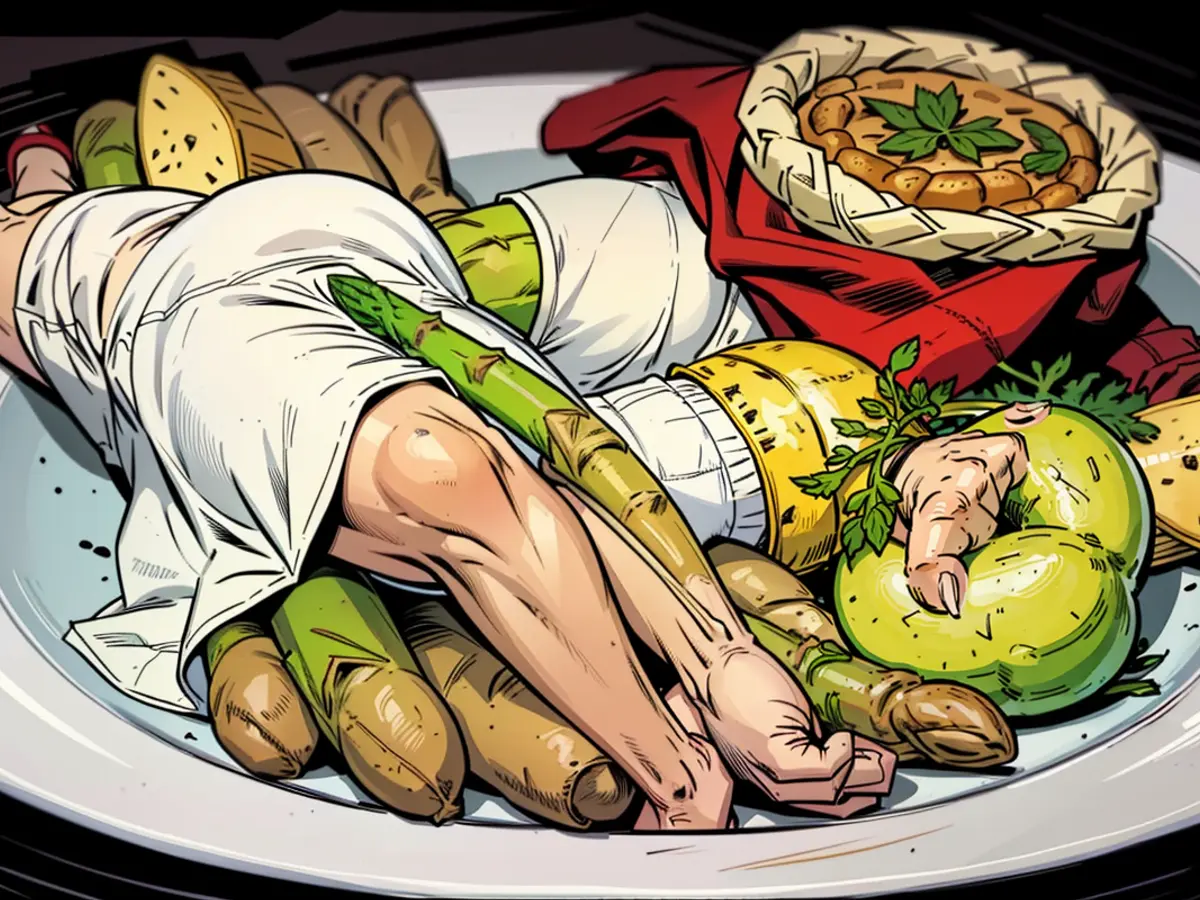Food culture - Bye-bye, potatoes? The end of the filling side dish in Germany
Once upon a time in Germany: Schnitzel, Spargel, Bratkartoffeln. Or: Kasseler, Grünkohl, Salzkartoffeln. This means: Under a regular, typically German warm meal, a three-component dish was usually understood. That is: Meat/Fish, vegetable side dish, (starch-based) side dish for filling up. Is the last one dying out? Does it mean saying goodbye? Bye-bye, side dish?
However, the eating culture and behavior at the increasingly expensive eating out have undergone multiple changes. A recent representative Civey survey revealed that about half of the adults in Germany eat out less frequently – "since the reduction of the value-added tax from 19 percent to 7 percent in the gastronomy." And those who read the menu in fashionable places in 2024 will often see that it is becoming normal for each side dish to be charged extra – often titled as "Sides," under which then often the carbohydrates like fries or mashed potato (or vegetables like grilled green asparagus). What happens culturally when the formerly self-evident side dish is only an option and not a "must" anymore?
Of course, millions of people still eat dishes like Roulade with Red Cabbage and Klöss. Many canteens, mess halls, and hospitals still use porcelain divided trays in three parts. However, younger people have had different preferences for a long time. In the modern nutritional lifestyle, all-in-one meals from a deep plate instead of a shallow one are popular. Think of trends like Bowls, Arabic cuisine, Asian food. And Pizza, Pasta, Burgers, Döner are already different from a sausage with sauerkraut.
"The long-established three-component meal in Germany is now perceived as outdated and seen as paternalistic by many," says cultural scientist Gunther Hirschfelder from the University of Regensburg. "Fixed three-course meals are roughly as outdated as the crisis-stricken department stores like Karstadt." People want to have a large selection and experience today. And just as they are disappointed in the store when there are only two racks with jeans instead of many dozens of models, so can disappointment spread when the menu is too rigid.
"The younger generation finds it often strange that everyone at the table should get the same thing. Eating has become an expression of one's own personality. We have pseudo-individualized nutritional styles," says Hirschfelder. "Mostly, it's a false choice. In the end, it's completely irrelevant whether I take rice or noodles." In the 80s, a debate about side dish preferences would have been considered bourgeois and snobbish, says the book author ("European Eating Culture: A History of Nutrition from the Stone Age to the Present Day").
"If you went to a middle-class place or to the Greeks in the 80s, you didn't always say what you wanted to take away or add or what you couldn't stand. And there was still the social trend that taught children and young people 'You eat what's on the table.'" Going out to eat was already a wonderful thing to do, and children had Schnitzel with Pommes to take - and that was good. "That would be seen as a total imposition today."
## "Potatoes as a Comfort Side Dish were Symbolically Charged"
To explain Germany's earlier culinary culture, Hirschfelder brings up some points. After the humiliating World War, there was a "levelled middle class society," as sociologist Helmut Schelsky once described it. "Socially, one sat in the same boat, symbolically also at the table, one maintained a nutrition within economic possibilities, and one rather didn't stand out with an extravagant taste. And potatoes as a comfort side dish were symbolically loaded." Material consumer goods were more important than what was on the table, but travel and housing were also significant. This changed only after the end of the GDR and the old FRG, according to Hirschfelder.
In the last roughly 30 years, new worldviews have unfolded in the affluent society after the Cold War - often along the narrative "I am what I eat." "In a globalized world, nutrition is a complexity reduction, so many consider it important." Currently, a return of political ideologies is observable, but the overvaluation of food in everyday life still prevails, the cultural scientist explains. It is still important what one eats and what one doesn't eat, for example, vegan lifestyles, low carb, or as exotic as possible food. "The motto seems to be: If I can't change the world, then I can at least change what's on my plate."
In the past, Schnitzel and Potatoes were staples in the three-component German meal, symbolizing a levelled middle class society after World War II. With the rise of individualism and affluence, people now value their diet as a reflection of their identity, resulting in a variety of food trends and the emergence of dishes like Schnitzel with Pommes being seen as an imposition.








